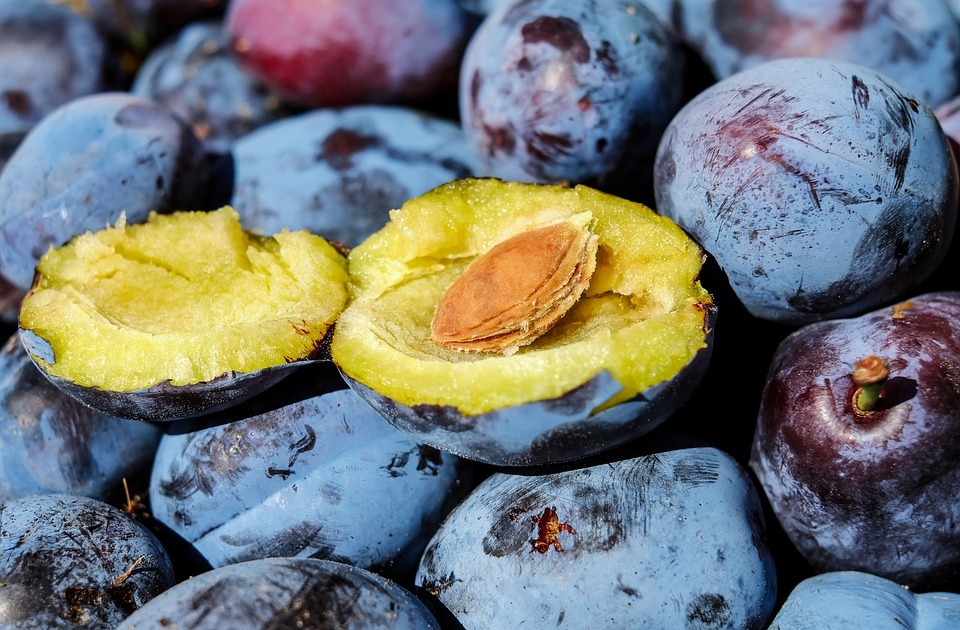Plums are divided into two groups the Japanese plums, which are reasonably round, and the European plums, which have a more elongated shape. The latter are often labeled “fresh prunes” because they are the type of plums that are often dried and sold as prunes. On the other hand, Japanese plums can be broken into black plums, red plums, and even yellow plums. In this article, we are going to know more about plums and their different types, such as plucots and pluots.
- Black Plums – Also known as the El Dorado, this type of plum has a deep purple skin with a musty yellow flesh along with a sweet and mild plum flavor. They are often used in making plum tarts because they do not easily fall apart when cooked. As with all black plums, when you cook them with their deep purple skin, your entire dish will most likely have a beautiful purple color.
- European Plums – This type of plums have longer shape compared to the Japanese plums. They usually have a lovely sweet flavor when eaten raw, but it also stays when they are well dried. You may also see European plums marketed as French prunes, Italian plums, or Italian prunes. They are also the type of plums that are labeled as “sugar plums.”
- Greengage Plums – This type of plum is commonly found in France, and they have green skin along with greenish-yellow flesh. Greengage plums have a bit of honey flavor to them.
- Mirabelle Plums –These plums are sweet and small with a reddish blush. They are used for making eau-de-vie in France. Mirabelle plums are considered to be the most delicious of all plums.
- Red Plums – Red plums have bright red skin and flesh. The skin has a tarty flavor that balances out the sweetness of the fruit’s flesh. When the red plums turn ripe, they are pretty soft, and it also means that they don’t last when they are transported. Just like all plums, red plums work well in jams.
- Yellow Plums – True to its name, yellow plums are yellow inside and out. They have a juicy and crisp fruit texture.
- Plucots – Plucots are earlier plum-apricot hybrids that have the features of plums and pluots. They have green to vibrant pink skin with red flesh inside. They also have a distinctive oval shape with reasonably firm flesh. That’s why they are much easier to ship compared to other kinds. They also have crispiness, which makes them an excellent ingredient for plum mint salsa.
- Pluots – Pluots, on the other hand, are a hybrid of plums and apricots. However, they have a bit more plum than apricot features. They are darker and rounder compared to plums, and they have a reasonably crisp texture, too.
When Are Plums in Season?
Plums and Pluots are always in season during the middle of summer and early fall, depending on the climate.
What is the White Stuff on Plums?
The white stuff that you can see on most plums are called blooms. Once plums have blooms on them, it is a sign that they are ripe and freshly harvested. That’s why when shopping for plums, make sure to look for that white stuff so that you know that they are not overly handled fruits.
Choosing a Ripe Plum
Just like peaches, plums have a bit of giving when you gently squeeze them. They vary so much in taste. That’s why they are the perfect fruit to buy at farmers’ markets because you can taste whatever varieties are on sale. This way, you will know if they are ripe or not. And, again, always look for the white bloom to determine if they are mature enough to consume.
